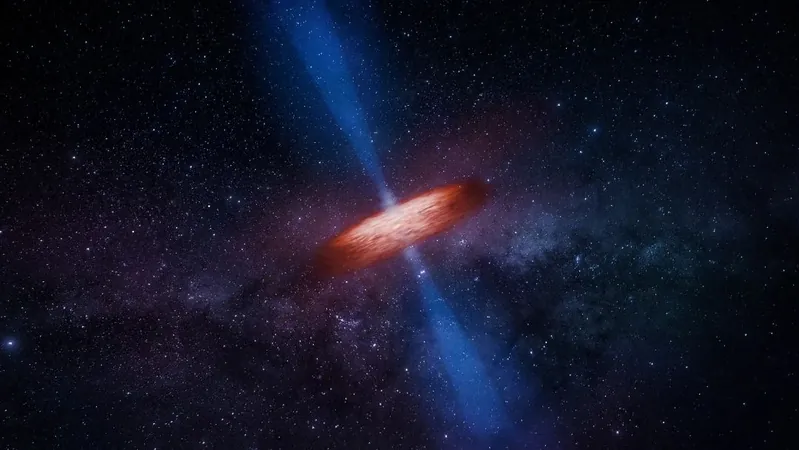
Unveiling the Mysteries of Black Hole Jets: What the Event Horizon Telescope Discovered!
2025-01-12
Author: Kai
The Fascination with Supermassive Black Holes
Astronomers have long been captivated by the supermassive black holes lurking at the centers of galaxies. These celestial giants are notorious not only for their immense gravitational pull but also for the spectacular jets they emit, which travel through space at near-light speeds. With some jets stretching millions of light-years across the cosmos, understanding the mechanics behind their creation and acceleration remains one of the greatest challenges in astrophysics.
Groundbreaking Research by Anne-Kathrin Baczko
A groundbreaking study led by Anne-Kathrin Baczko of Chalmers University of Technology in Sweden is shedding light on this fascinating phenomenon. Harnessing the power of the Event Horizon Telescope (EHT), an unparalleled combination of eight radio telescopes distributed globally, the research team is set upon deciphering the cosmic puzzles posed by these black hole jets.
NGC 1052: A Unique Playground for Astronomers
In a significant leap made in 2017, the EHT team directed their attention to NGC 1052, a galaxy located approximately 60 million light-years away in the constellation Cetus. This galaxy harbors a supermassive black hole, boasting a mass equivalent to over 150 million suns. It intriguing emits bipolar jets in opposite directions, a behavior that provides a unique playground for astronomers aiming to unveil the mysteries of black hole mechanics.
Challenges of Observation
Despite being a critical target, the region surrounding the black hole is notoriously faint and complex, making it more challenging than any previously observed galaxy. “For such a faint and unknown target, we were not sure if we would get any data at all—but the strategy worked,” Baczko noted, emphasizing the triumph of the project.
Significant Findings from EHT Observations
The findings from the EHT observations revealed that the black hole’s vicinity emits bright radio waves at a wavelength of one millimeter. This particular segment of the electromagnetic spectrum is crucial for producing highly detailed images, as documented in a recent publication in the prestigious journal Astronomy & Astrophysics. Interestingly, the region shines even brighter at longer wavelengths, making it an ideal candidate for future upgrades in radio astronomy.
Exciting Future Prospects
Excitingly, the next-generation Very Large Array in New Mexico and an updated version of the Event Horizon Telescope—aspiring to not only capture images but also recording dynamic videos of black holes—are set to push the boundaries of such research even further.
Comparisons and Future Imaging
Comparing the newly examined region around NGC 1052 to the infamous first image of the supermassive black hole M87*, famously captured by the EHT in 2019 as an unmistakable fuzzy orange donut, researchers noted that the size of the jet-producing area is similarly ample. This presents a promising future for imaging black hole jets with unparalleled resolution.
Conclusion: A New Era of Exploration
As researchers continue to peel back the layers of mystery surrounding black hole jets, the collaboration between international astronomers and cutting-edge technology heralds a new era of astronomical exploration. What's next in the quest to unveil the secrets of our universe? The adventure has only just begun!

 Brasil (PT)
Brasil (PT)
 Canada (EN)
Canada (EN)
 Chile (ES)
Chile (ES)
 Česko (CS)
Česko (CS)
 대한민국 (KO)
대한민국 (KO)
 España (ES)
España (ES)
 France (FR)
France (FR)
 Hong Kong (EN)
Hong Kong (EN)
 Italia (IT)
Italia (IT)
 日本 (JA)
日本 (JA)
 Magyarország (HU)
Magyarország (HU)
 Norge (NO)
Norge (NO)
 Polska (PL)
Polska (PL)
 Schweiz (DE)
Schweiz (DE)
 Singapore (EN)
Singapore (EN)
 Sverige (SV)
Sverige (SV)
 Suomi (FI)
Suomi (FI)
 Türkiye (TR)
Türkiye (TR)
 الإمارات العربية المتحدة (AR)
الإمارات العربية المتحدة (AR)